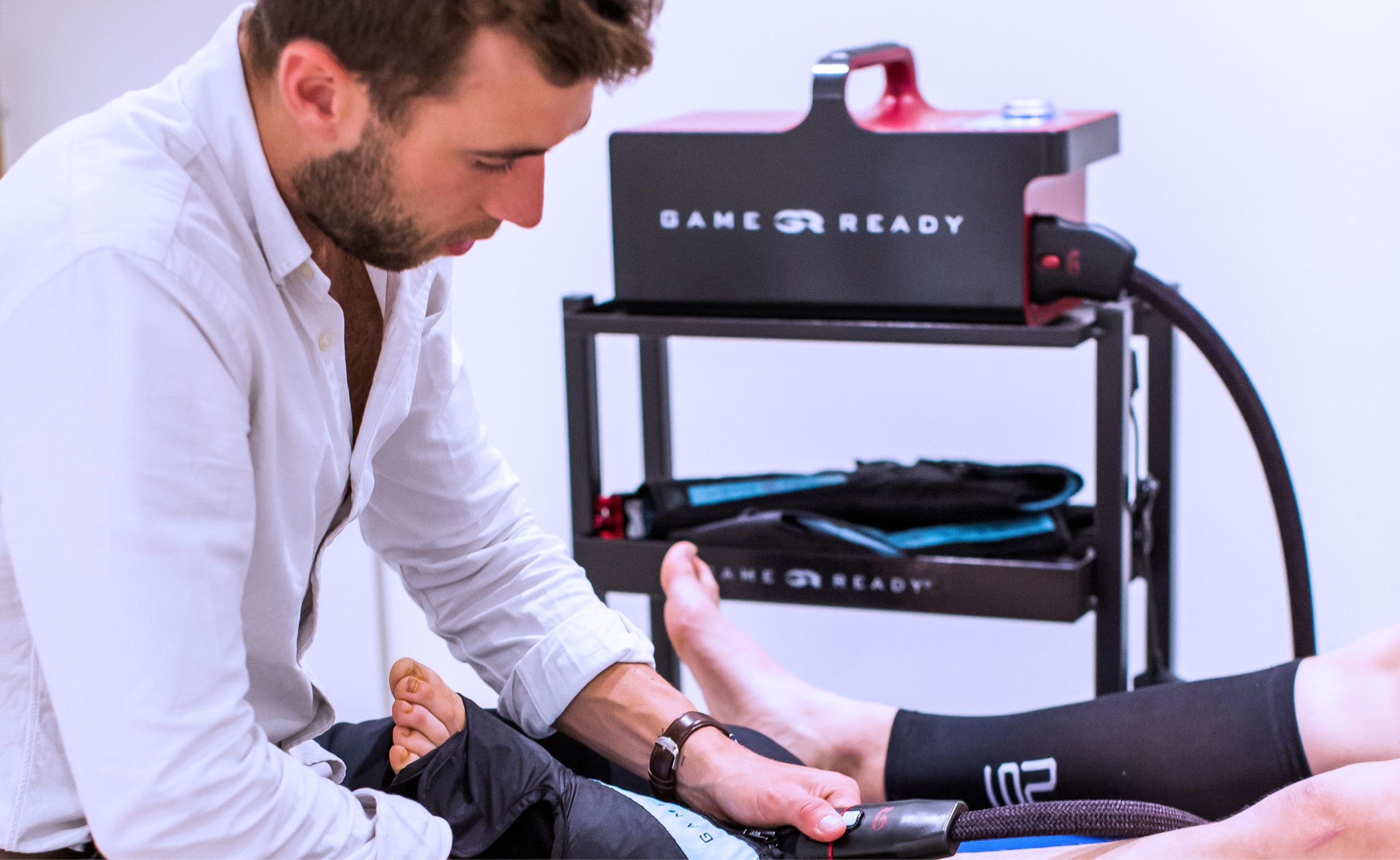Icing is one of the most commonly recommended treatments for a broad range of injuries. While sometimes it can be as simple as applying an ice pack to a bruise, have you ever actually stopped to think about why icing works and the best way to ensure you’re getting the most out of it?
Why is ice good for injuries?
Basically, when you suffer from a sprain, strain or bruise you will experience a rush of blood to the area, which causes swelling and pressure in the tissue. Applying ice slows down the flow of blood, subsequently reducing the pain and swelling.
However, as one of Spectrum’s lead physios explains, there are different schools of thought on just how good icing is for injuries.
“Some physios say you actually want swelling to happen as it’s a natural part of the healing process,” says Rob Foyster. “But we believe the body produces a surplus of swelling, so by icing we can reduce it to a point where it’s manageable and you don’t overly stiffen up. This not only has the benefit of reducing pain and discomfort but it can also help get your rehab started more quickly.”
Ice can also be used for pain reduction in other instances, for example, post-surgery or to ease pain caused by long-term problems such as arthritis.

How long should you ice an injury for?
It’s best to start icing an injury as soon as possible after it happens, to slow that initial rush of blood. Minor injuries should be iced for the first two or three days (or until the swelling goes down), ideally as frequently as every two hours (when you’re awake!) for roughly 15 to 20 minutes at a time.
Is it ever too late to ice an injury for the icing to be effective?
While it’s best to get on to icing as quickly as possible after an injury occurs, if there is still swelling or inflammation present, then it’s always worth icing. Better late than never!
How do I properly ice an injury?
The first step is making sure you have an ice pack! If you haven’t got a bought one from the chemist, you can easily make one with a plastic bag filled with crushed or cubes of ice. Simply fill the bag, squeeze out all the air and seal it up nice and tightly (without holes, unless you feel like getting wet as the ice melts!). Or if you have a long-forgotten bag of frozen peas or the like, that will do nicely instead.
When applying the ice it’s important to have a damp towel or cloth between the ice and your skin to avoid ice burns. It’s totally normal for your skin to look red and feel cold and slightly numb, but if it becomes blue, blotchy looking or feels extremely numb, you should stop. Otherwise, apply firm pressure with the ice pack, either by holding it in place with your hands or by strapping it to you with a bandage, and keep it in place for 15 to 20 minutes.
To maximise the effectiveness of icing, we recommend following the entire PRICE sequence. PRICE is an acronym that stands for:
Protection
Protect your injury and make sure you don’t do any further damage. For example use crutches for a badly sprained ankle, or a sling for an arm injury.
Rest
Avoid certain movements and sports that may slow down the healing process and take it easy.
Ice
As we’ve at length discussed, icing an injury is key!
Compression
Using elastic compression bandages in conjunction with icing can help limit the swelling and speed up your rehab process.
Elevation
Keeping the injured part of your body raised above your heart when you’re icing (and whenever else possible) will also help reduce swelling, particularly in the first couple of days after the injury occurs.
How can a physio accelerate the effectiveness of icing?
If you’re finding that icing at home isn’t helping as much as you’d like, coming in to visit us at Spectrum’s London clinic for GameReady Ice/Compression treatment can be the way to go.

“People are sometimes icing at home and finding that it doesn’t seem to do anything,” says Rob. “But when we apply GameReady to deep swelling in a place where an icepack can’t necessarily reach, it can actually get the core temperature of a joint right down.
“A lot of people who have been told to ice for a few days expect their body will move on to the next stage of healing. But if it doesn’t, then it could be because of deep inflammation and it will prevent them from gaining movement, and that’s when it’s a good idea to come in and see us if you haven’t already,” he explains.
Spectrum offers cheaper GameReady-specific appointments for people who just need icing and not a full consultation. Book yours or an initial assessment, via our website.



